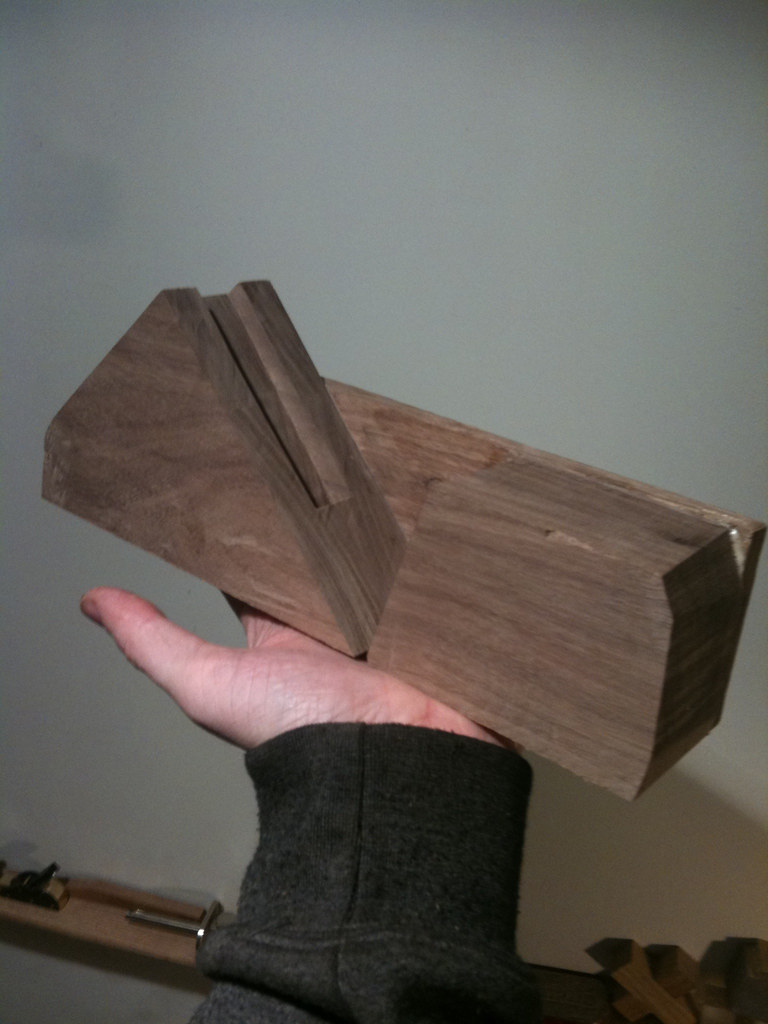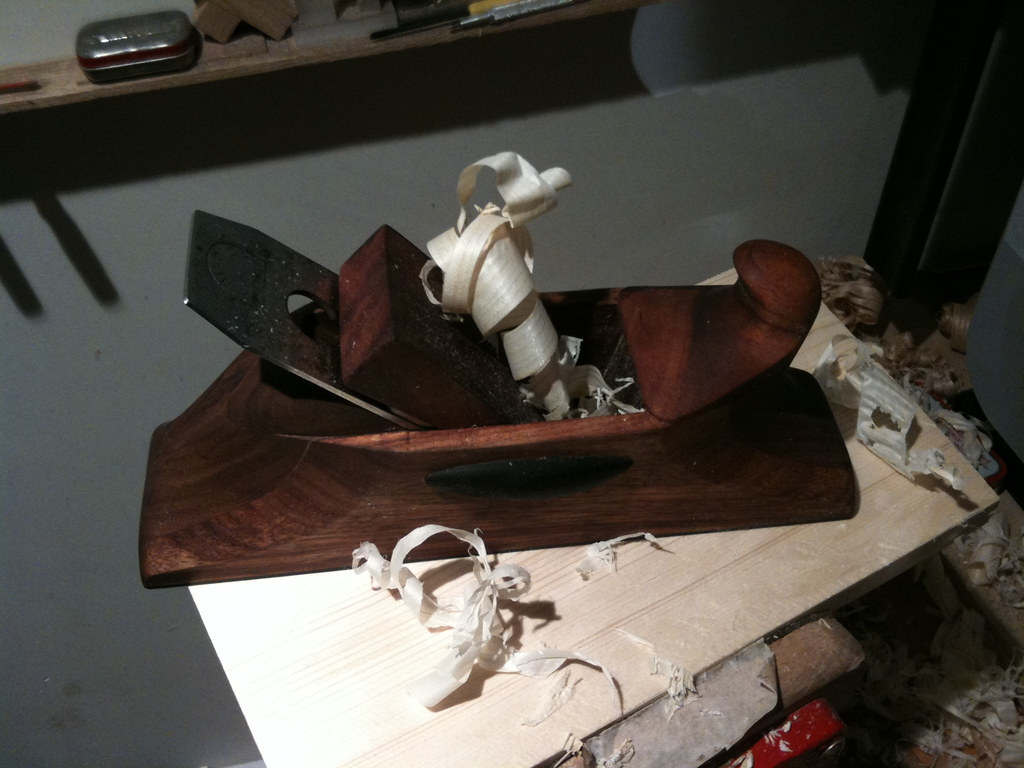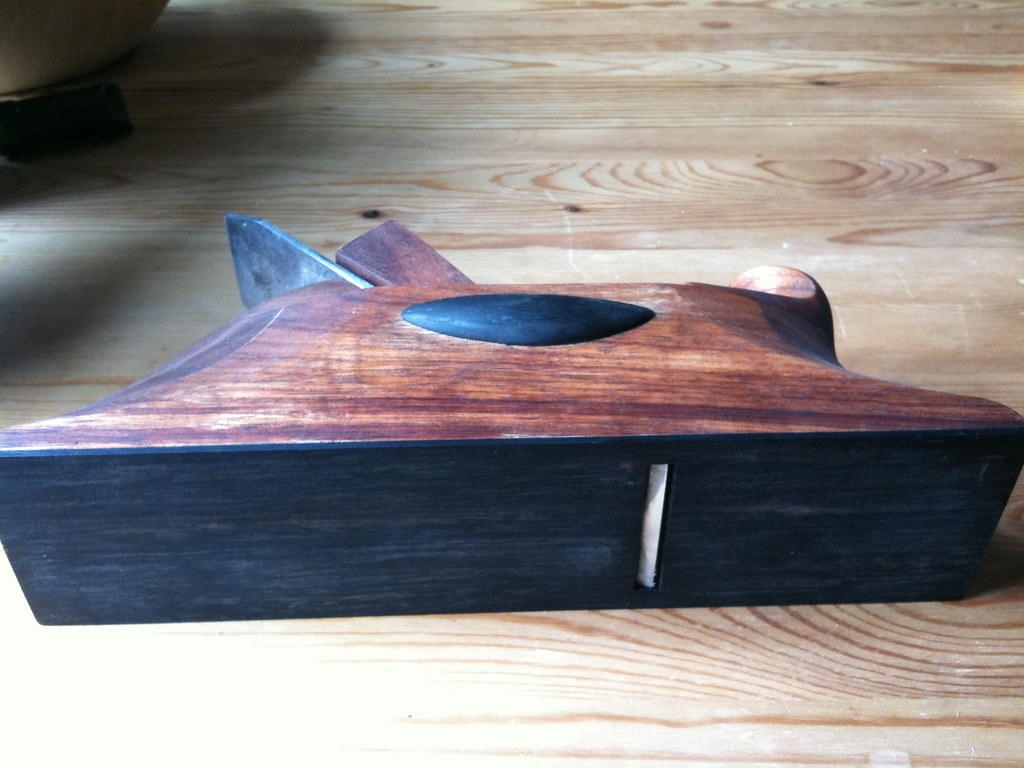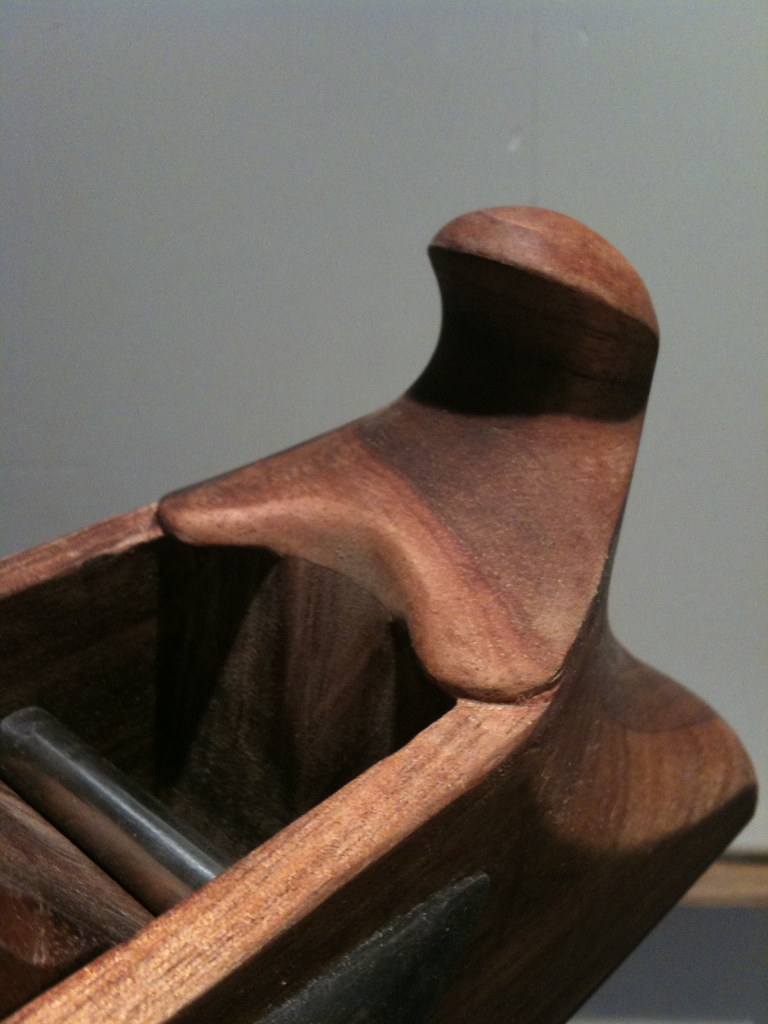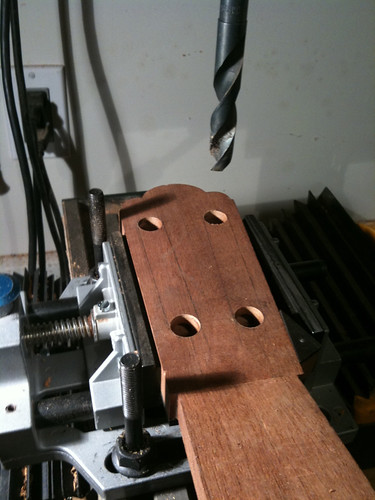 That took a bit longer than expected. I've been working busily on the guitar, but I'm a bit behind on the documentation. In this post I'll show how I made one portion of the rosette. The rosette is the decorative circle around the hole in the top of the guitar. As well as its aesthetic function it also helps prevent cracking around the soundhole, which can occur due to the different speeds that sidegrain and endgrain absorb moisture.
That took a bit longer than expected. I've been working busily on the guitar, but I'm a bit behind on the documentation. In this post I'll show how I made one portion of the rosette. The rosette is the decorative circle around the hole in the top of the guitar. As well as its aesthetic function it also helps prevent cracking around the soundhole, which can occur due to the different speeds that sidegrain and endgrain absorb moisture. 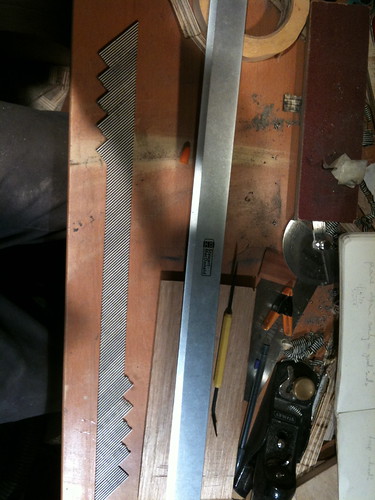 The rosette that I am making will be in the style of Hauser (since I'm making a guitar based on one of his) but it will not be an exact replica of a specific rosette that he built, as far as I know. The rosette is one of the more complicated portions of the guitar for me to build, as I am building it entirely from scratch. The first thing I did was to glue up alternating black and white veneers into a sandwich. I then sliced that block into several sections and glued them at an angle.
The rosette that I am making will be in the style of Hauser (since I'm making a guitar based on one of his) but it will not be an exact replica of a specific rosette that he built, as far as I know. The rosette is one of the more complicated portions of the guitar for me to build, as I am building it entirely from scratch. The first thing I did was to glue up alternating black and white veneers into a sandwich. I then sliced that block into several sections and glued them at an angle.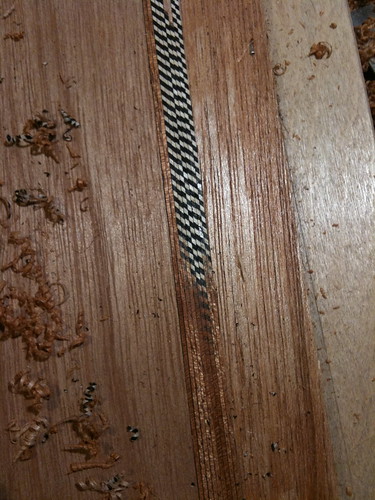 The total length of the strip needed to be quite long in order to completely encircle the outside of the rosette. I then glued this strip between two pieces of mahogany and cut it into 1mm thick strips. The mahogany helped reinforce the fragile herringbone and allowed me to scrape it to thickness. Once all the pieces were the correct thickness, I planed away the mahogany from them all at the same time.
The total length of the strip needed to be quite long in order to completely encircle the outside of the rosette. I then glued this strip between two pieces of mahogany and cut it into 1mm thick strips. The mahogany helped reinforce the fragile herringbone and allowed me to scrape it to thickness. Once all the pieces were the correct thickness, I planed away the mahogany from them all at the same time.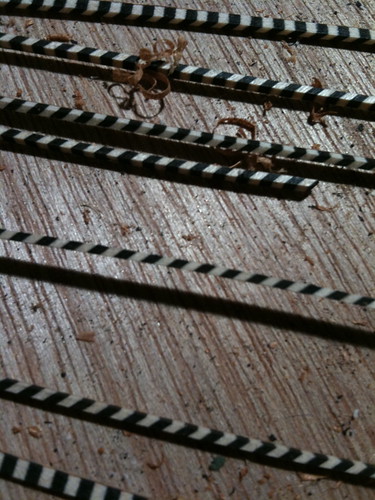 The final result was quite good, although I did have a lot of breakages. I still had enough length on a few pieces to make do.
The final result was quite good, although I did have a lot of breakages. I still had enough length on a few pieces to make do.  I tried a few different combinations of veneers with the half herringbone pattern. Including this one with green.
I tried a few different combinations of veneers with the half herringbone pattern. Including this one with green.In the end I decided to go with this pattern with a bright red. I'm hoping this will match the red colour in the back and sides that I am using. The white is plain maple, and the outside is rosewood. I've also placed a thin black veneer on either side of the herringbone.



